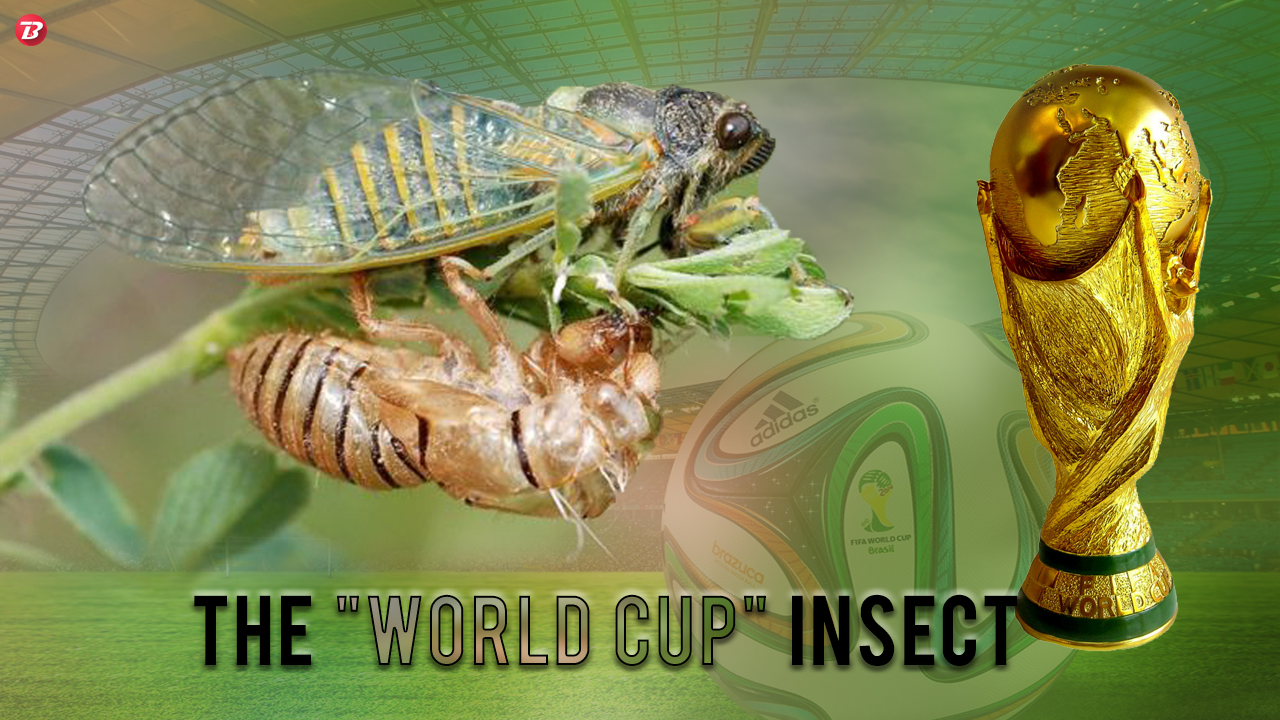Begin typing your search above and press return to search.
Featured
The Insect named after World Cup caught Meghalaya in frenzy

The FIFA World Cup, which has earned its sobriquet of being the greatest show on this planet, has gripped the nation from Kolkata to Kannur. The quadrennial carnival of football action lasting a month is what we fans await eagerly, hoping the teams we support to lift the coveted trophy. The residents of two small hamlets in Meghalaya as well joined the frenzy of the World Cup along with a strand of strange insects appearing from oblivion in which spiced up their celebration. Bizzare, but true - the strange insect appears in the Saiden and Lalilad villages of Meghalaya’s Ri Bhoi district about a month before every FIFA World Cup, and slowly disappear for the next four years.
The insect, known as Niangtaser, declare its arrival in the bushes with a distinctive loud whistling sound.
The tribal villagers have named the insect as Niang World Cup (niang is insect in Khasi).
The Niangtaser, according to experts, emerges after every four years during the month of May (hence the likening to the World Cup). In an interaction with The Bridge, Gerald Samuel Duia, a tour guide and an adventure sport enthusiast from Meghalaya, said, "It is a sub-species, or genus, of the Cicada family, called Chremistica, which lays eggs in grooves of trees."Chremistica is one of the 2,500 species of the Cicada family found in South East Asian countries. The Niangtaser has large wings held ‘roofwise’ over its head when at rest, which extend beyond the abdomen when folded. The body is mostly slate-grey or black but the segments of the abdomen are ringed with gold, while the legs are marked with orange. After mating, the females lay their eggs in the stems of herbaceous plants, small bushes and even bracken stems. The eggs hatch after 50-125 days, when the nymphs burrow into the soil. The male cicadas sing from the low bushes and vegetation, the song being a high pitched ringing buzz lasting for minutes and produced through the membrane within the thorax of the insect, which clicks to-and-fro at a rapid rate."It remains underground in cocoons and comes out once in four years. That's why tribal people in the area have nicknamed it as world cup insect."
The insect is unique and is said to be found only in this part of the country.
The villagers have been witnessing the strange appearance of the insect for the past five to six decades. The insect is reportedly high in protein and is eaten raw after it grows wings. It is also high in demand in the village markets and fetches as high as Rs 400 per kg. The deep-fried insect is a gastronomic delight of the locals. Also read: On the Road: One football fan’s cycling odyssey to meet Lionel Messi The insect shot to fame in 1990s when a group of local youths and elders first invited visitors to the village to witness the beautiful metamorphosis. The tribals have even been organizing the Niang World Cup Festival in Ri Bhoi district since1998. The first edition of the festival was held in Saiden village near Nongpoh, the headquarters of Ri-Bhoi district.The local football tournament
The Niang World Cup Festival features a number of football matches between the local teams from the villages. This year, too, the local people organised a festival to celebrate the arrival of the Cicada insect from May 10 and May 11. The winning team of the football tournament clinched the coveted trophy which is a brass replica of the Chremistica, whose distinctive feature is golden markings on its body.The festival is organized by the Ri Bhoi Tourism and Environmental Development Forum (RBTEDF) in collaboration with the Saiden Socio Cultural Sports Club (SSCSC). The Meghalaya Council of Science, Technology and Environment and tourism authorities have also joined hands to help in organising the festival. Chairman of the RBTEDF, Plielad Tiewsoh, told The Bridge, "The festival aims to preserve this kind of insect that emerges from the earth once every four years and coincides with the FIFA World Cup. We focus on making people aware of the importance of preservation of the environment, forest and animals." From donning jerseys of our favourite sides to some gazillion posts on social media - #VamosAlbiceleste, #ThreeLions, #AllezLesBleus - while all of India seems hooked with the fervour of the FIFA World Cup, the Niang World Cup, is definitely an admirable effort for the people in Meghalaya's Ri-bhoi to embrace the celebration of this great sporting event."We mark the arrival of the insect with a festival. This year also, a host of people participated in the celebration where we organised football matches, food fests, fishing competition, bonfire, traditional dance, fancy dress, apart from camping, musical events and a discussion on how to conserve the insect. we marked the end of the festival with a DJ night" said Gerald.
Next Story






